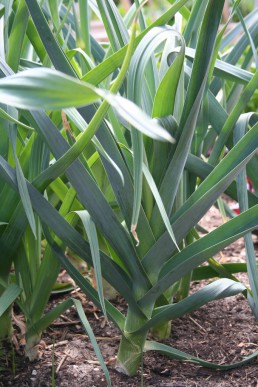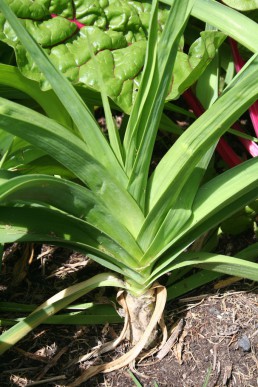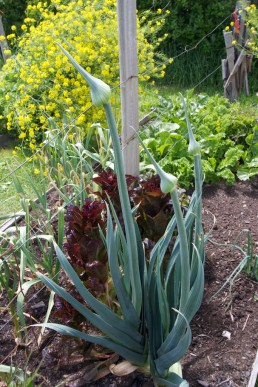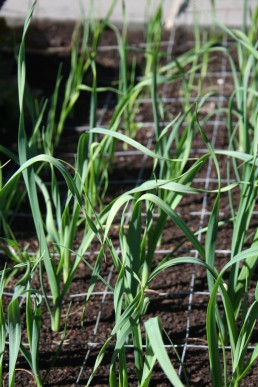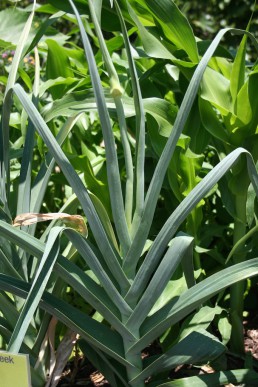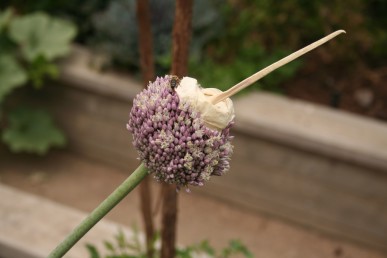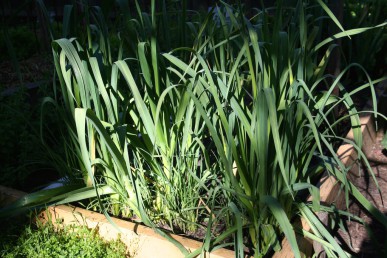Leeks, Allium porrum, are a great vegetable. They are especially good for people who find onions and garlic too strong, but still enjoy a milder onion flavour. They are biennial vegetables that are usually grown as an annual. They thrive in cold and warm temperate climates and are best planted in autumn and winter.
Sowing seed
Leeks can be grown from seed planted in punnets or by purchasing and planting seedlings. Seedlings are generally ready for transplanting 10 weeks after sowing. Plant out about 5 cm apart in rows 30cm apart. Each small plant should go into a hole about 10cm deep and as the plants develop hill soil around the stems. Later, when the leeks are a reasonable size, remove every second plant to give a spacing of about 10cm. These slender leeks are considered to be a gourmet treat. The rest of the leeks are left to mature (this can take 6 months) and can be covered with pipe or a milk carton to give tender white stems.
Leeks do best in fairly rich, fine, loose soil with a pH between 6.5 and 7, and like an open, sunny position. Dig compost or well-rotted manure into the soil before planting. Good drainage is essential. If you use soils that have been used for a previous crop that needed heavy feeding, like potatoes or brassicas, then add less manure. Add lime if your soils are acid and mulch to keep weeds under control but keep the mulch back a bit from the stems.
Some good open pollinated cultivars of leek are Elephant, with large thick stems; Giant Carentan, an old French variety that is very cold tolerant; King Richard, with very long stems, Jaune de Poitou, an old French variety with a yellow leaf and Welsh Wonder. I also like to grow perennial leeks that produce offsets around the parent plant. When the parent is harvested the offsets are replanted to start new plants.
Seed saving
To save see you need to leave the plant in the ground until the second year when the flower head will grow. Flowers are a magnet for beneficial insects. When most of the small flowers are open (so you can see the black seed), cut off the head and place it in a brown paper bag. Once completely dry the seed will have dropped to the bottom. Label and store in a cool dry place for up to two years.

